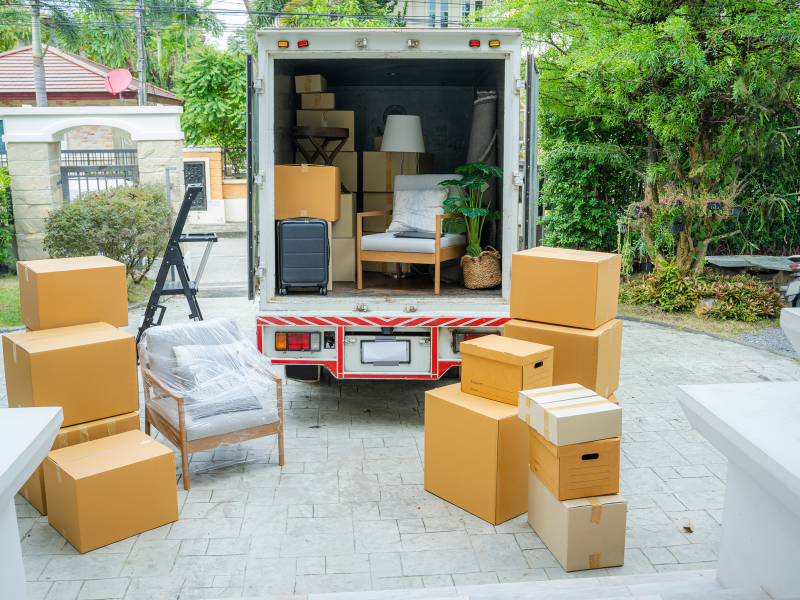Packing dishes for a move requires method and organization. It is possible to ensure the safety of your items with a few simple techniques. In this article, we will explore the best practices for packing dishes.
First, we will explain how to prepare the necessary materials. Next, we will detail the steps to pack each type of dish. Finally, we will discuss the organization of boxes and secure transport. Follow these tips for a calm and breakage-free move.
Preparation Before Packing
Gather the Necessary Materials
To properly pack your dishes, gather all the necessary materials. Start with strong cardboard boxes. They provide good protection for fragile items. Next, obtain wrapping paper, bubble wrap, and packing tape. These tools are essential for protecting glasses, plates, and other kitchen items.
It is also useful to have cardboard dividers. They keep glasses and bowls in place. Finally, make sure to have markers to label each box. This will facilitate unpacking in your new home.
Choosing the Right Boxes
Opt for medium-sized boxes. Boxes that are too large become heavy and difficult to transport. Ensure they are in good condition to guarantee the safety of your fragile items.
For particularly delicate items like glasses, use boxes with compartments. This provides additional protection. Wrap each piece individually with newspaper or bubble wrap before placing them in the box.
Don't forget to label each box with its contents and the destination room. Also indicate if the box contains breakable items.
Dish Packing Techniques
Packing Plates and Bowls
- Prepare the Box : Line the bottom of a box with crumpled paper. This provides a first layer of protection.
- Pack Individually : Take a plate and wrap it with a sheet of paper. Place a second plate on top and fold the sheet to separate the two plates. Repeat this operation for a maximum of 3 to 4 plates.
- Eliminate Friction : Separating each plate with paper reduces friction between them and decreases the risk of breakage.
- Form a Bundle : Wrap the set of plates with another sheet of paper to form a bundle. This helps to tighten the package.
- Place in the Box : Arrange the bundle of plates vertically in the box. This reduces the risk of breakage during transport.

Packing Glasses and Cups
- Individual Protection : Wrap each glass and cup in bubble wrap. Make sure to properly protect the handles of the cups.
- Use Compartment Boxes : Place glasses and cups upright in compartment boxes for optimal protection.
- Fill Empty Spaces : Use crumpled paper to fill any empty spaces in the box. This prevents items from moving during transport.
- Secure and Label : Use packing tape to close the box. Label the box with "Fragile" and indicate the destination room.
Packing Dishes
- Wrap Each Dish : Wrap each dish individually with wrapping paper or bubble wrap.
- Use Dividers : Place the dishes vertically in boxes with dividers to keep them in place.
- Fill Empty Spaces: Fill empty spaces with crumpled paper to prevent movement.
- Close and Label : Use packing tape to securely close the box. Label each box to facilitate unpacking.
The secret to good packing is to make everything as tight as possible. Add crumpled paper to tighten everything, then close the box. By following these techniques, you ensure the safety of your dishes during the move.
Loading and Transporting Dishware Boxes
Placing the Boxes in the Moving Truck
When loading dishware boxes into the moving truck, place them on top of boxes containing heavier objects. This prevents crushing the fragile dishware.
Arrange the boxes so that they are securely nestled between other boxes or furniture to minimize movement.
Dishware boxes should be easily accessible, yet sufficiently protected by less fragile items around them.
Handle with Care During Loading and Unloading
When handling dishware boxes, be cautious. Carry each box using the designated handles or support it from the bottom to prevent shocks.
During loading and unloading, place the dishware boxes last so they are the first to be unloaded.
This reduces the time they are exposed to the risk of damage. Inform the movers about the contents of the fragile boxes so they can be handled with care.




Post a comment